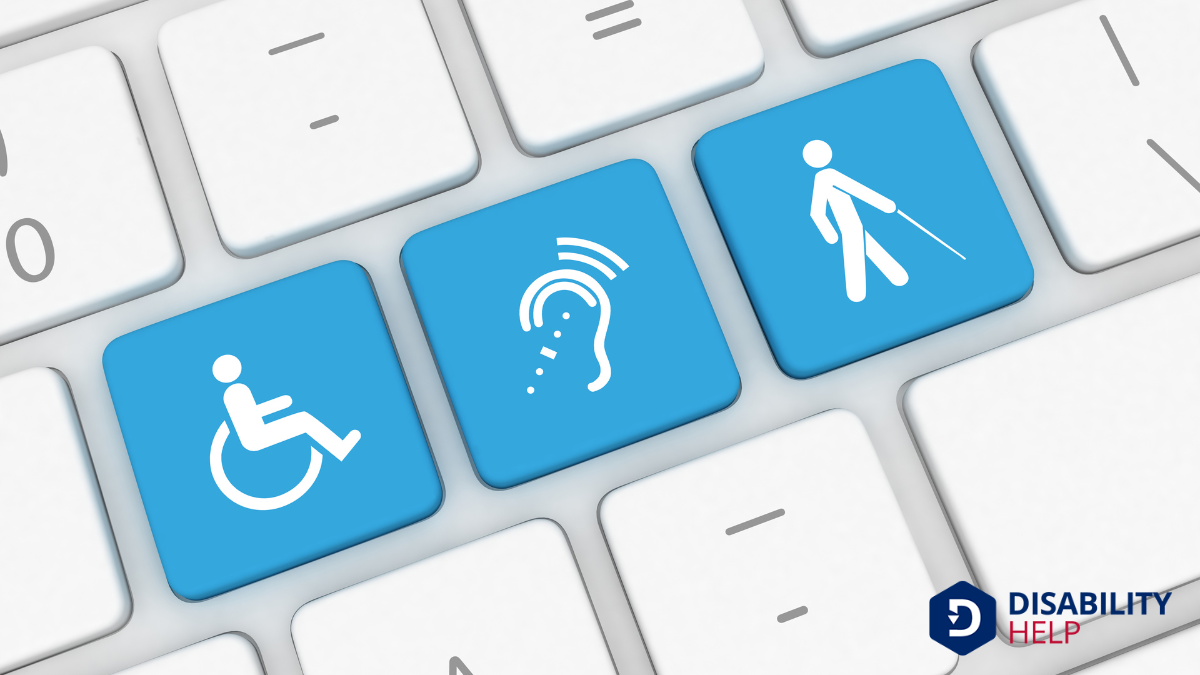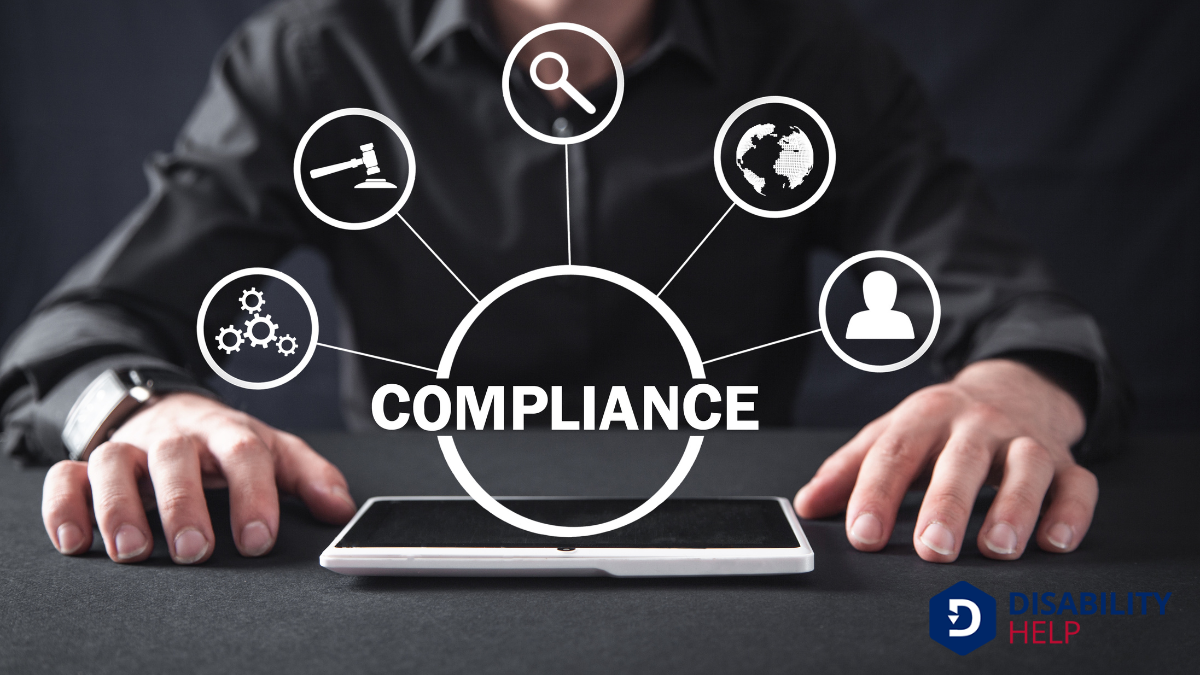When we think about anti-discrimination laws, we often imagine physical spaces, but how do these laws apply to digital environments? As technology becomes integral to our daily lives, making certain digital platforms are accessible to everyone is essential. Anti-discrimination laws like the ADA mandate that websites and apps accommodate users with disabilities. But what challenges do businesses face in meeting these requirements, and how can we guarantee compliance in this ever-evolving digital landscape?
Key Takeaways
- Anti-discrimination laws ensure equal accessThe principle that all individuals, including those with disabilities, should have equal opportunity... to digital content for individuals with disabilities, akin to physical spaces.
- The Americans With Disabilities Act (ADA)A U.S. law that prohibits discrimination against individuals with disabilities in all areas of publi... mandates accessible online content for people with disabilities.
- Section 508 requires federal agencies to provide accessible electronic technology, influencing broader digital accessibilityThe design of products, devices, services, or environments to be usable by people with disabilities.... standards.
- Legal frameworks like the ADA and Section 508 enforce digital inclusivity, preventing discrimination in online environments.
- Landmark cases affirm that anti-discrimination laws apply to websites and apps, emphasizing digital accessibility compliance.
Understanding Digital Accessibility
Understanding digital accessibility is essential as we navigate an increasingly online world. It’s about ensuring everyone, regardless of ability, can access and use digital content.
When we consider how people with disabilities interact with technology, we realize the barriers they face. Websites, apps, and digital platforms should be designed inclusively from the start. By doing so, we create spaces where everyone can participate equally.
Our responsibility extends beyond compliance; it’s about embracing diversityThe inclusion of individuals from a wide range of backgrounds, including people with disabilities. and fostering inclusivity. When we think about digital accessibility, we should ask ourselves: Are we making our digital spaces open to all?
The aim is to remove obstacles, whether through alt text for images, keyboard-friendly navigation, or clear, readable fonts. Together, we can build an accessible digital future.
Overview of Anti-Discrimination Laws

As we consider the importance of digital accessibility, it's also vital to understand the legal frameworks that support inclusive practices. Anti-discrimination laws aim to guarantee that everyone, regardless of ability, has equal access to opportunities and resources.
These laws help create a society where digital spaces aren't just accessible to a few but open to all. We must recognize that these laws don't just apply to physical spaces; they extend to digital environments as well.
By addressing barriers in digital access, these laws aim to prevent discrimination against individuals with disabilities. It's essential that we stay informed about how these regulations impact our digital practices.
Understanding them helps us foster environments that are both welcoming and compliant with legal standards.
Key Legal Frameworks Affecting Digital Accessibility
When we explore the key legal frameworks affecting digital accessibility, we uncover how these regulations shape our digital landscape.
Two significant frameworks guide us: Section 508 of the RehabilitationThe process of helping individuals with disabilities achieve and maintain their optimal physical, se... Act and the Web Content Accessibility Guidelines (WCAG).
Section 508 requires federal agencies to make their electronic and information technology accessible to people with disabilities. It sets a standard that influences how we design and develop digital content.
Meanwhile, WCAG offers a set of guidelines created by the World Wide Web Consortium (W3C), focusing on making web content more accessible. Though not legally binding on its own, WCAG often serves as a benchmark in legal cases.
Together, these frameworks empower us to create inclusive digital environments, ensuring everyone can access online content.
The Role of the Americans With Disabilities Act
When we consider the role of the Americans with Disabilities Act in digital accessibility, it's clear that the ADA's requirements seek to guarantee equal access to online content for everyone.
Legal precedents and interpretations continue to shape how these requirements are applied, often presenting businesses with compliance challenges.
Together, let's explore how companies can navigate these challenges while embracing inclusivity.
ADA's Digital Accessibility Requirements
While digital landscapes evolve rapidly, the Americans with Disabilities Act (ADA) remains a cornerstone in ensuring accessibility for all.
The ADA’s digital accessibility requirements are vital in leveling the playing field, allowing everyone equal access to digital spaces. We must understand that the ADA mandates websites and online services be accessible to individuals with disabilities. This means incorporating features like screen readerSoftware that reads aloud the text on a computer screen, used by individuals who are blind or visual... compatibility and keyboard navigability.
As we navigate these requirements, it’s essential that businesses and organizations recognize their role in fostering inclusivity. Meeting these standards isn’t just about compliance; it’s about embracing a broader audience and ensuring equitable access.
Let’s commit to making digital spaces welcoming for everyone, because when we do, we create a more inclusive world for all.
Legal Precedents and Interpretations
As we explore legal precedents and interpretations, it’s essential to understand how courts have shaped the role of the Americans with Disabilities Act in the digital domain.
The ADA, originally crafted with physical spaces in mind, has been extended by courts to include digital spaces, like websites and apps. Key cases have helped define our understanding.
For instance, in Robles v. Domino’s Pizza, the court ruled that websites must be accessible to individuals with disabilities, affirming the ADA’s applicability to online platforms. This decision underscores our responsibility to guarantee digital inclusivity.
Compliance Challenges for Businesses
Maneuvering the compliance landscape for digital accessibility presents significant challenges for businesses, especially when considering the Americans with Disabilities Act.
It's understood that ensuring our online platforms are accessible isn't just a legal obligation but also a commitment to inclusivity. However, the path to compliance can be complex.
Here are key challenges businesses face:
- Understanding Requirements: Interpreting ADA guidelines for digital spaces can be confusing, as they were originally designed for physical spaces.
- Technical Expertise: Implementing accessibility features requires specialized knowledge that not all businesses possess.
- Ongoing Maintenance: Accessibility isn't a one-time fix; continuous updates and testing are necessary.
- Resource Allocation: Prioritizing resources for accessibility amidst other business demands can be difficult.
Web Content Accessibility Guidelines (WCAG)

As we explore the Web Content Accessibility Guidelines (WCAG), we need to focus on its core principles: perceivable, operable, understandable, and robust.
These standards are vital for ensuring access to digital content for everyone, regardless of their abilities.
However, implementing WCAG can present challenges, but overcoming these hurdles is essential for true digital inclusivity.
Key WCAG Compliance Principles
When we aim to make the digital world inclusive, the Web Content Accessibility Guidelines (WCAG) serve as our essential blueprint.
WCAG principles guide us in creating accessible online experiences for everyone. Let’s explore these key principles:
- Perceivable: Information and user interface components must be presentable to users in ways they can perceive. This means providing text alternatives for non-text content and offering captions for videos.
- Operable: Users should be able to navigate and interact with the interface. For instance, all functions must be accessible via a keyboard.
- Understandable: Information and operation of the user interface must be clear. We should use simple language and provide instructions when needed.
- Robust: Content must be robust enough to work with current and future technologies, ensuring longevity and compatibility.
Importance of WCAG Standards
The significance of WCAG standards can't be overstated. They provide a structured framework to guarantee web content is accessible to everyone, including individuals with disabilities.
These guidelines help us create digital environments where users can perceive, understand, navigate, and interact with websites effectively. By adhering to WCAG standards, we promote inclusivity and equal access, which are fundamental to anti-discrimination laws.
When we follow these standards, we're not just meeting legal requirements; we're enhancing user experience for all. It’s about creating a web that's welcoming to everyone, regardless of their abilities.
WCAG Implementation Challenges
Although the benefits of implementing WCAG standards are clear, many organizations face significant challenges in doing so.
We acknowledge that this process can be intimidating, but breaking it down can help us tackle these obstacles effectively.
Here are some common challenges to reflect on:
- Resource Allocation: Implementing WCAG requires time and money, which can strain limited budgets.
- Technical Expertise: Not every team has the necessary skills to interpret and apply these technical guidelines.
- Complexity of Content: Websites with dynamic content or multimedia elements often require more effort to make accessible.
- Keeping Up with Updates: Staying current with WCAG updates demands ongoing attention and adaptation.
Recent Case Law and Legal Precedents
As we explore recent case law and legal precedents, it’s clear that courts are increasingly addressing the intersection of anti-discrimination laws and digital accessibility.
Many cases highlight the importance of ensuring websites and online services are accessible to individuals with disabilities. For instance, the landmark decision in Robles v. Domino’s Pizza reinforced that the Americans with Disabilities Act (ADA) applies to websites and mobile apps.
Courts have consistently ruled that digital spaces must offer equal access, reflecting the ADA’s principles.
We’ve observed that these decisions emphasize that businesses must prioritize accessible digital design.
As legal precedents continue to evolve, they’re shaping how companies approach accessibility, making it an essential aspect of digital strategy.
Understanding these cases helps us appreciate the legal framework driving digital inclusivity.
Challenges in Implementing Digital Accessibility
As we tackle digital accessibility, we encounter significant challenges like technical barriers that hinder seamless integration.
Ensuring legal compliance adds another layer of complexity, requiring us to navigate evolving standards and regulations.
Furthermore, resource allocation constraints often limit our ability to implement all-encompassing solutions efficiently.
Technical Barriers Encountered
Implementing digital accessibility often presents technical barriers that can be challenging for organizations endeavoring to create inclusive online environments.
These barriers can arise from the complexities of integrating accessible features into existing digital platforms. Let’s explore some common technical hurdles:
- Legacy Systems: Older systems and platforms might lack built-in accessibility features, making updates necessary but difficult.
- Inconsistent Standards: Varying accessibility standards across devices and platforms can complicate compliance efforts.
- Resource Limitations: Limited technical expertise and budget constraints can hinder effective accessibility implementation.
- Dynamic Content: Ensuring accessibility in constantly updating web content requires ongoing attention and adaptation.
Legal Compliance Issues
While technical challenges can be intimidating, legal compliance issues present a different set of hurdles for organizations aiming to achieve digital accessibility.
We must navigate a complex landscape of laws and regulations, including the Americans with Disabilities Act (ADA) and Section 508 of the Rehabilitation Act. These laws mandate that digital content be accessible to individuals with disabilities, but the guidelines can sometimes be vague, leaving room for interpretation.
This uncertainty can lead to anxiety about potential legal repercussions if we fail to meet the criteria. To address this, we need a clear understanding of legal requirements and updates in accessibility standards.
Resource Allocation Constraints
Though we recognize the importance of digital accessibility, we often face significant challenges when it comes to allocating the necessary resources. Balancing budgets and priorities can make it difficult to commit to the changes needed.
Here are some key constraints we frequently encounter:
- Financial Limitations: Many organizations operate under tight budgets, making it hard to fund extensive accessibility initiatives.
- Limited Expertise: We might lack the in-house skills needed to implement accessibility features, necessitating costly external consultants.
- Time Constraints: Updating digital platforms to meet accessibility standards requires substantial time, often competing with other urgent projects.
- Technological Barriers: Existing systems may not easily support accessibility upgrades, requiring extensive overhauls.
Understanding these challenges helps us find ways to overcome them, ensuring more inclusive digital experiences for everyone.
Practical Steps for Ensuring Compliance

To guarantee compliance with anti-discrimination laws regarding digital accessibility, we must first conduct a thorough accessibility audit of our digital platforms. This audit helps us identify existing barriers and prioritize necessary changes.
Let’s engage with experts or use automated tools to assess areas like website navigation, readability, and compatibility with assistive technologies.
Once the audit is complete, we’ll develop an actionable plan. This plan should outline specific steps, assign responsibilities, and set realistic timelines.
Training our team on accessibility best practices is essential, making sure everyone understands their role in maintaining compliance. Regularly updating and testing our platforms further guarantees ongoing accessibility.
The Role of Technology in Accessibility
Technology plays a pivotal role in enhancing accessibility, transforming how individuals with disabilities engage with digital content.
We see its impact in a variety of tools and innovations that make the digital world more inclusive. Here are a few ways technology assists us:
- Screen Readers: These convert text to speech, allowing visually impaired users to access written content effortlessly.
- Voice Recognition Software: It enables hands-free navigation and control, benefiting users with mobility challenges.
- Closed Captioning: It offers a textual representationThe way people with disabilities are depicted in media, culture, and politics, often influencing pub... of audio, essential for those who are deaf or hard of hearing.
- Text-to-Speech Apps: These applications provide spoken versions of text, aiding individuals with reading difficulties.
Future Trends in Digital Accessibility Compliance
As we look ahead, emerging trends in digital accessibility compliance promise to reshape the digital landscape in significant ways.
We’re seeing a push for more inclusive designDesign that considers the needs of the widest range of users, including people with disabilities, fr... practices, where accessibility is integrated from the start rather than as an afterthought. This proactive approach guarantees that digital experiences cater to everyone’s needs.
Artificial intelligence plays an essential role, offering tools that automatically identify and fix accessibility issues. It’s exciting to think about how AI can streamline this process, making compliance easier and more effective.
Furthermore, evolving standards like WCAG are becoming more robust, guiding us toward better practices.
Let’s embrace these trends as opportunities to create a digital world that's accessible to all, fulfilling both legal obligations and our shared commitment to inclusivity.
Frequently Asked Questions
How Do Digital Accessibility Laws Impact Small Businesses?
Digital accessibility lawsLegislation that mandates the removal of barriers and ensures access for individuals with disabiliti... guarantee we provide an inclusive online experience. They impact small businesses by requiring us to make websites accessible to everyone, including those with disabilities. Let's embrace these laws to broaden our reach and enhance user satisfaction.
Are There Penalties for Non-Compliance With Digital Accessibility Laws?
Yes, there are penalties for non-compliance. We could face fines, lawsuits, or reputational damage. It's essential we guarantee our digital content is accessible to all, meeting legal standards and fostering an inclusive environment for everyone.
How Can I Test My Website for Accessibility Compliance?
Let's test our website for accessibility compliance by using tools like WAVE or Axe. They'll help us identify issues. We can also manually review using WCAG guidelines to guarantee all users have equal access to our content.
What Is the Cost of Implementing Digital Accessibility Solutions?
Let's consider the costs of implementing digital accessibility solutions. They vary depending on the site's complexity, but investing now saves future expenses from potential legal issues. Prioritizing accessibility guarantees inclusivity and compliance, benefiting everyone.
How Do International Digital Accessibility Standards Differ?
Let's explore how international digital accessibility standards differ. These standards vary by region, reflecting local policies and cultural priorities. Understanding these differences helps us guarantee our digital content is accessible and compliant worldwide, benefiting everyone.
Conclusion
In our journey to guarantee digital accessibility, we’ve seen how anti-discrimination laws, like the ADA, are essential in fostering an inclusive online environment. By embracing guidelines such as WCAG, we can overcome challenges and work towards compliance. Let’s leverage technology to break barriers and create equal opportunities for all users, regardless of their abilities. As we look to the future, our commitment to accessibility will shape a more inclusive digital world for everyone.






